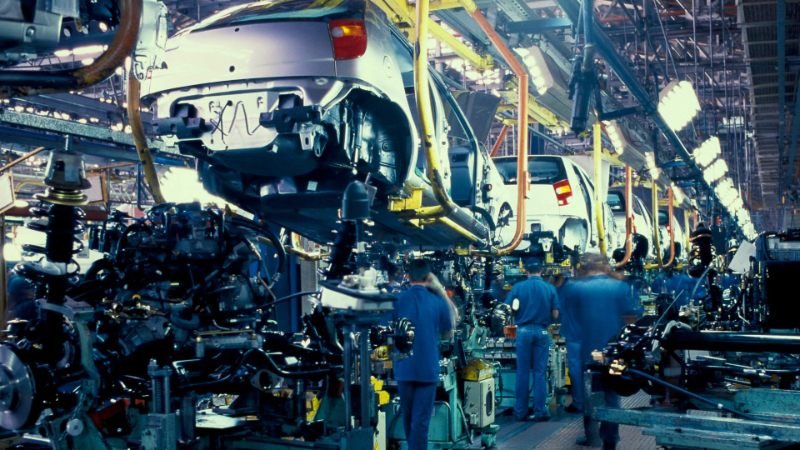
Have you ever been a victim of counterfeit automobile parts? Imagine driving down the highway when suddenly, your brakes fail without warning. Unbeknownst to you, a counterfeit part could be the culprit—an invisible threat that endangers lives every day. Unfortunately, counterfeiting is a major problem in the automobile industry, costing companies and consumers billions of dollars annually.
In 2021 alone, over 1.86 million counterfeit Mercedes Benz products were seized in 650 customs raids. The counterfeit automotive parts market is estimated to be worth $45 billion globally, and it’s growing rapidly. The sale of fake parts not only leads to significant financial losses but also poses severe safety risks to drivers and passengers.
The Scope of the Problem: A Billion-Dollar Threat
The automotive industry, like many others, is highly prone to counterfeiting. Popular counterfeit parts include brake pads, airbags, and engines. Close behind are windshields, lights, and wheels—each of which, if defective, could pose a fatal risk. Counterfeit parts are often made from substandard materials that do not meet safety regulations, leading to defective brakes, fuel lines, and other critical components.
The sale of counterfeit car parts affects performance, reduces the vehicle’s longevity, and in severe cases, may cause accidents. Automobile manufacturers lose revenue as customers unknowingly or deliberately opt for these cheaper, fake products instead of buying genuine parts. The impact on brand reputation is equally damaging, as the use of counterfeit parts leads to mistrust and dissatisfaction among consumers.

Challenges in Combating Counterfeits
Counterfeiters pose significant challenges for manufacturers, suppliers, and consumers alike. The main difficulties in combating counterfeit parts include:
Difficulty in Detection: Even seasoned technicians can find it hard to identify fake parts, as many are designed to look almost identical to their genuine counterparts.
High Cost of Anti-Counterfeiting Measures: Implementing measures such as hologram labels, product serialization, DNA marking, and QR codes can be expensive and resource-intensive.
Regulatory Gaps: The lack of uniform international laws and regulations makes it difficult to enforce anti-counterfeiting measures globally. Some countries have weak or non-existent regulations, creating loopholes for counterfeiters.

How the Automobile Industry is Fighting Back
To counter this growing menace, the automobile industry has initiated several measures:
Technological Solutions: Programs like "Automobile Counterfeiting 2022" focus on identifying and disrupting the production and distribution of counterfeit parts. This includes advanced anti-counterfeiting technologies such as holographic labels, DNA marking, and QR codes, which help trace the origin of products and ensure authenticity.
Consumer Education and Awareness: Manufacturers are stepping up efforts to educate consumers about how to spot fake parts. Through dedicated websites, social media campaigns, and public service announcements, they are raising awareness of the risks associated with counterfeit automobile parts and encouraging consumers to buy only genuine items.
Collaborations with Law Enforcement: Automobile manufacturers are partnering with local law enforcement agencies to help investigate and prosecute counterfeiters. By joining forces with other industries affected by counterfeiting, they are creating a united front against these illegal activities.
What Can Consumers Do?
Consumers have a critical role to play in combating counterfeit automobile parts. Here’s what they can do:
- Buy from Reputable Sources: Ensure that any parts or components purchased are from a reputable supplier or dealer.
- Check for Authenticity Markings: Look for holographic labels, serial numbers, and QR codes that verify the authenticity of the parts.
- Stay Informed: Follow manufacturers’ websites and social media channels to stay informed about the latest ways to detect and avoid counterfeit products.
Conclusion
Combating counterfeiting in the automobile industry is no easy feat. It requires vigilance from manufacturers, suppliers, and consumers alike. By implementing strong anti-counterfeiting measures, educating the public, and working closely with law enforcement, the automobile industry is taking significant steps to protect consumers and their brands. But the fight against counterfeiters is ongoing. As consumers, we must do our due diligence to ensure that every part we purchase is genuine and safe.
Shield Your Automotive Brand from Counterfeits with Acviss - Certify : Perfect for Authenticity and Trust!
FAQs for Acviss - Certify:
- What is Acviss - Certify, and how does it help combat counterfeit automotive parts?
Acviss - Certify is an advanced anti-counterfeiting solution designed to protect automotive brands from counterfeit parts. It uses technologies like QR codes, holographic labels, and blockchain integration to verify the authenticity of products, ensuring that customers receive only genuine items. - How does Acviss - Certify work?
Acviss - Certify assigns a unique non-cloneable label to each product. When a customer scans the code using their smartphone, they receive real-time information about the product's authenticity. This simple step helps identify counterfeit items and ensures that only genuine products reach the customers. - What are the benefits of using Acviss - Certify for automotive manufacturers and suppliers?
Acviss - Certify helps manufacturers protect their brand reputation, reduce revenue loss due to counterfeits, and enhance customer trust. By providing real-time data analytics, it also helps companies understand where and how counterfeiting occurs, allowing for better-targeted anti-counterfeiting efforts. - How can customers verify the authenticity of automotive parts using Acviss - Certify?
Customers can verify authenticity by scanning the labels on the product packaging with their smartphone. The system immediately provides information confirming whether the part is genuine or counterfeit, helping them make informed purchasing decisions. - Is Acviss - Certify easy to integrate with existing systems?
Yes, Acviss - Certify is designed to be seamlessly integrated into existing erp, supply chain and inventory management systems. It is flexible and scalable, making it suitable for automotive companies of all sizes. The solution comes with robust support and customization options to meet specific business needs.


